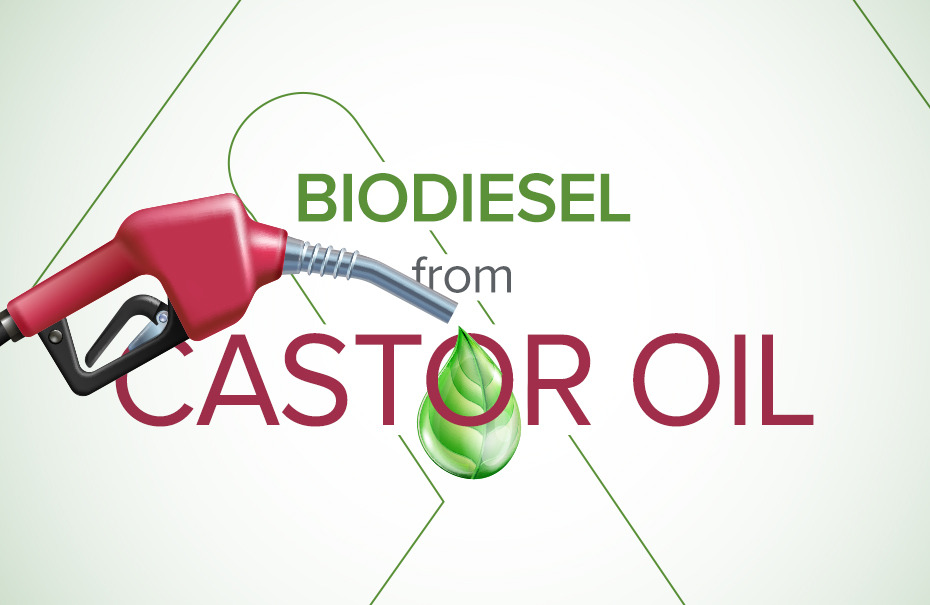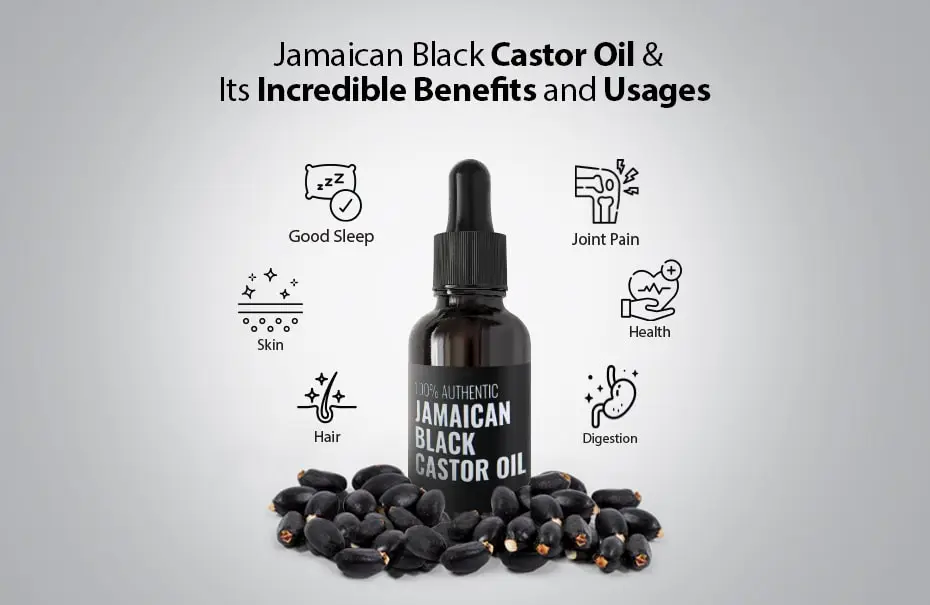Production of Biodiesel from Castor Oil – An Overview

Eco-friendly and renewable, biodiesel stands as a solid substitute for standard diesel fuel made from oil. As our world fights with issues related to climate change, poor fossil fuel supply chains, frequently changing oil prices and their volatility, biodiesel derived from castor oil is one of the focal points of sustainable fuel solutions. Depleting fossil fuel resources and challenges posed by greenhouse gases are further aggravating the scene. Therefore, biodiesel production sourced from castor oil is a prudent replacement for fossil oil. obtained from Ricinus communis, has recently become a focal point for biodiesel production because of its distinctive characteristics.
Castor plants can thrive in marginal soils and diverse weather conditions. These unique characteristics make it a preferred crop for biodiesel production. The plant’s ability to grow in semi-arid regions with limited water helps preserve fertile land for essential crops (edible crops). This also directly contributes to preserving fertile land for food crops. Castor oil manufacturers are helping many industries involved in biodiesel production by providing them with high-quality castor oil that increases production output.
In this article, we will discuss the production of biodiesel from castor oil.
What Properties of Castor Oil Make it Suitable for Biodiesel Production?
What makes castor oil a preferred material for producing biodiesel from castor oil is the unique properties that it possesses. It has optimal density, chemical composition, and physicochemical properties that make it perfect for biodiesel production.
Let’s discuss it.
A. Chemical Composition and Structural Advantages (High Ricinoleic Acid Content)
Castor oil’s first quality that makes it good for biodiesel production is its chemical makeup. It contains a significant concentration of ricinoleic acid (C18H34O3), comprising approximately 88-90% of its fatty acid content. Ricinoleic acid is unique among typical fatty acids due to the presence of a hydroxyl group (-OH) at the 12th carbon location. This specific hydroxyl group enhances its compatibility with alcohols in the transesterification process. It also gives better protection against oxidation (when compared to oils with more polyunsaturated fatty acids).
B. Physicochemical Properties Relevant to Biodiesel Conversion
Another reason why castor oil is congenial for biodiesel production is its distinctive physicochemical properties. Extraordinary high viscosity, higher density, and lower iodine value. These qualities provide it better oxidative stability and fuel injection characteristics. It also has a low acid value that makes direct alkaline transesterification easier. These properties collectively make castor oil a unique feedstock for biodiesel production.
Biodiesel From Castor Oil: Production Processes
Transesterification Process (Catalytic and Non-Catalytic Methods)
Transesterification is the most reliable and popular method for converting castor oil into biodiesel.
Reaction of Triglycerides in Castor Oil + Alcohol = Fatty Acid Methyl Esters (Biodiesel) + Glycerol (byproduct)
Top approaches to transesterification are:
A. Catalytic Processes
Homogeneous Alkaline Catalysis
This method uses homogeneous alkaline catalysts like potassium hydroxide (KOH) or sodium hydroxide (NaOH).
Research has shown that optimal conditions for the alkaline transesterification of castor oil include:
- Catalyst concentration: 0.5-1.5% (wt% of oil)
- Methanol-to-oil molar ratio: 6:1 to 12:1
- Reaction temperature: 30-65°C
- Reaction time: 30-120 minutes
Heterogeneous Catalysis
Heterogenous catalysts have some perks for getting the catalyst back and cleaning up the product. Scientists have looked into different types of solid catalysts for turning castor oil into biodiesel:
- Calcium oxide (CaO)
- Zeolite-supported catalysts
- Mixed metal oxides
- Enzyme-based catalysts
B. Non-Catalytic Methods
Supercritical methanol transesterification is a catalyst-free approach. This method uses high temperatures (250-400°C) and pressures (10-25 MPa) for direct transesterification without catalysts, leading to faster reaction rates and eliminating catalyst-related purification issues.
While you can implement any process, Catalytic and Non-Catalytic, for transesterification, keep the below parameters in mind for flawless processes:
- Alcohol-to-Oil Ratio: Higher methanol-to-oil ratios are good for conversion rates, but too much can make it hard to separate the products. The best alcohol-to-oil ratios fall between 6:1 and 12:1, though some heterogeneous catalysts need higher ratios (up to 15:1).
- Catalyst Concentration: For homogeneous alkaline catalysts, concentrations of 0.5-1.5 wt% often give the best results. Higher concentrations can cause soap to form if the system contains water.
- Reaction Temperature: Regular transesterification happens at 60-65°C (just under methanol’s boiling point). However, castor oil can react well at lower temperatures (30-40°C). This is because the hydroxyl group in ricinoleic acid helps alcohol mix better.
- Reaction Time: The best reaction times are between 30 and 120 minutes, depending on other conditions. If the reaction goes on too long, it might reverse or cause saponification.
- Mixing Intensity: Good mixing is key when the reaction starts. This helps overcome limits in mass transfer between the oil and alcohol parts.
Key Considerations specific to castor oil biodiesel production include:
- Viscosity Management: Castor oil’s thick consistency demands good heating and mixing setups to ensure proper mixing in bigger operations.
- Emulsion Formation: The hydroxyl group in ricinoleic acid can help create stable mixtures that make it hard to separate phases when recovering the product.
- Heat Transfer: Keeping an even temperature becomes trickier in larger tanks when dealing with thicker castor oil.
- Catalyst Recovery: For solid catalysts, making sure they last long and don’t dissolve much during repeated use is a real challenge.
- Product Purification: The special traits of castor oil biodiesel might need different cleaning and purifying steps compared to regular biodiesel.
Purification and Quality Improvement Process:
The purification of castor oil biodiesel needs the following:
- Dry washing with adsorbents like silica or ion-exchange resins
- Membrane separation
- Sequential washing with dilute acid followed by water
- Vacuum drying or desiccant-based methods
- Addition of viscosity-reducing additives
- Optimization of transesterification conditions
Benefits of Castor Oil-based Biodiesel
Castor oil-based biodiesel offers numerous advantages that position it as a promising alternative to conventional diesel:
Environmental Benefits:
|
Technical Advantages:
|
Processing Advantages:
|
Agricultural and Socioeconomic Benefits:
|
Other benefits of castor oil-based biodiesel products:
- Lower carbon dioxide emissions compared to fossil diesel
- Carbon sequestration during plant growth
- Lower energy inputs for cultivation (due to castor’s ability to grow in marginal conditions)
- Absence of sulfur emissions during combustion
- Reduction of human toxicity potentials
- Non-edible oil not directly competing with food markets
- Less price volatility compared to edible oil feedstocks
- Lower energy requirements for processing
- Simplified processing in some aspects (due to better alcohol miscibility)
Conclusion
Biodiesel produced from castor oil is non-toxic, lacks aromatic compounds, and has a reduced cetane number. Castor oil already has use cases in many industries, including pharma, cosmetics, chemicals, paints, and more. However, in recent years, this non-edible vegetable oil has also found itself utilised for biodiesel production. Castor oil has the potential to create biodiesel, opening up new paths to greener fuel options.
This oil’s special features make it preferable for biodiesel production. Unlike many early biofuels, castor oil doesn’t spark the food vs. fuel debate. Also, castor plants grow well even in poor soil with little care. This makes them good for the environment and means they don’t take the land meant for regular food crops. Biodiesel from castor oil offers a green and workable choice to replace fossil fuels. As experts keep studying and improving it, we’ll see this fuel play a bigger part in green energy. This could help cut down on carbon output and boost our energy freedom.
Ambuja Solvex is one of the top castor oil suppliers that industries involved in biodiesel production can contact to procure high-quality castor oil.



